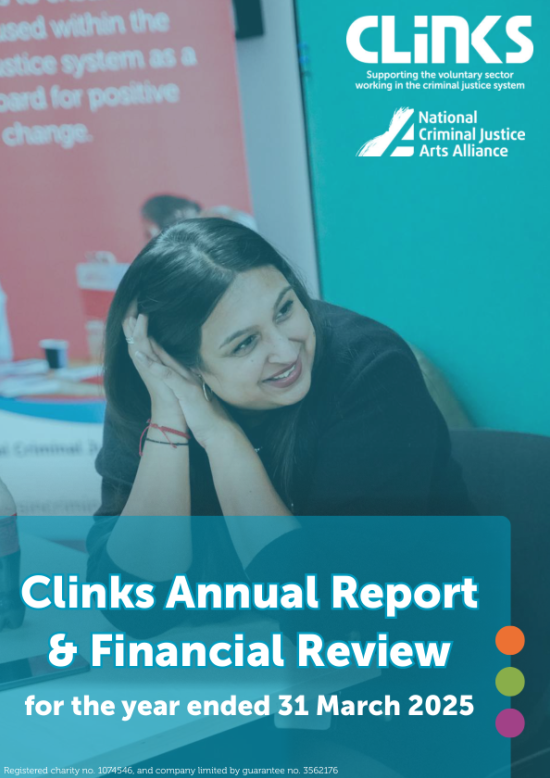In October Clinks conducted interviews with the West Mercia Probation Trust (WMPT), Clinks member YSS and other local VCS organisations to highlight an innovative and inclusive approach to commissioning. This has now been published as a case study, the first in a series of commissioning case studies from Clinks, and is available to download here. My blog post puts a spotlight on what WMPT, YSS and other local organisations are trying to do to expand upon the approach outlined in our commissioning case study, based on a recent YSS/WMPT event I attended.
WMPT’s approach to commissioning is a breath of fresh air, an approach that was summarised by Rob Smith, CEO of YSS, as “reverse engineering”, or, developing services from the bottom. This involves the VCS strategically in the review and design of services, ensuring that the commissioning process is transparent and accessible, offering a level playing field for the VCS to be procured to deliver services. If you add to this the fact that WMPT have recently taken over the day-to-day management of the newly established West Mercia Youth Offending Service then you start to see the potential opportunity for a vastly different approach.
1 Step Beyond – a new network
The event I attended was starting a debate about how a wider West Mercia partnership, called 1 step beyond, could be developed that responds to the needs of people throughout the Criminal Justice process by designing, testing and commissioning new services in partnership.
What would a West Mercia partnership look like?
Presentations at the event from Herefordshire, Shropshire, Telford, and Worcestershire Probation Local Delivery Units (LDU) made it abundantly clear that, although overlaps exist, there are distinct and diverse local needs in each LDU. West Mercia providers are going to have to be very creative to build a network that meets the needs of everyone all at once. So how local do you go? What structure could you impose? Here are some thoughts I had,
- Providers need to make time for the intelligent design of services rather than relying on commissions or grants to generate good ideas and collaboration.
- A network that brings together diverse partners to design services needs clear co-ordination, administration and ultimately funding. Therefore it needs a hub, most likely provided by one lead organisation that has experience of developing networks and is impartial (often local infrastructure organisations fulfil this role).
- How local do you go? You could argue that a West Mercia wide network allows for the greatest strategic influence but then you run the risk of disregarding the diversity of the four local authority areas. So you need some way to have locality specific strategies.
- The network needs to involve smaller organisations through regular contact and consultation. It should have a small and nimble steering group but needs to be totally transparent to ensure others are genuinely involved and can have their say.
- Providers need to be on an equal footing with a diverse range of commissioners, to achieve this there will need to be checks and balances that restrict commissioners from dictating the agenda.
- A clear service user involvement strategy has to be at the heart of the network. This includes people throughout the criminal justice process, such as perpetrators and victims of crime, as well as the wider community?
- Discussions will need to be framed in some sort of sensible structure; are they around service user groups (Women, BAME, children and families, young adults), areas of need (drug and alcohol, housing, mental health, finance and debt, employment), services (mentoring, volunteering, restorative justice, counselling, sports activities), or points of transition (early intervention, policing, sentencing, release from custody, youth to adult transitions).
There is still a long road ahead for West Mercia but they are starting from a positive place of cooperation and genuine strategic engagement of the VCS. Some early attempts were made at the event to visualise what a local network might look like. I have taken some of these ideas and added to them to create the model below; I hope this highlights the complexity of any potential network as well as providing some food for thought. Also, look out for a forthcoming Clinks Do It Justice guide on network development for more ideas and good practice.
Here are some questions to spark debate, use the comment facility below to voice your opinion.
Q. Can networks cover large areas or should they be more local?
Q. Do small organisations have the resources to get involved in this type of collaborative activity?
Q. Is greater collaboration like this realistic in an age of increasing competition?
What's new
Blogs
Anne Fox CEO of Clinks to stand down after a decade of service
Latest on X
The role is for a leader from an organisation focused on racially minoritised people, with expertise in service delivery, policy, advocacy, or related areas in criminal justice. Racial disparities are present at every CJS stage. This role ensures these voices are central in shaping policy to help address and eradicate them. Apply by Mon 18 Nov, 10am. More info: https://www.clinks.org/voluntary-community-sector/vacancies/15566 #CriminalJustice #RR3 #RacialEquity

